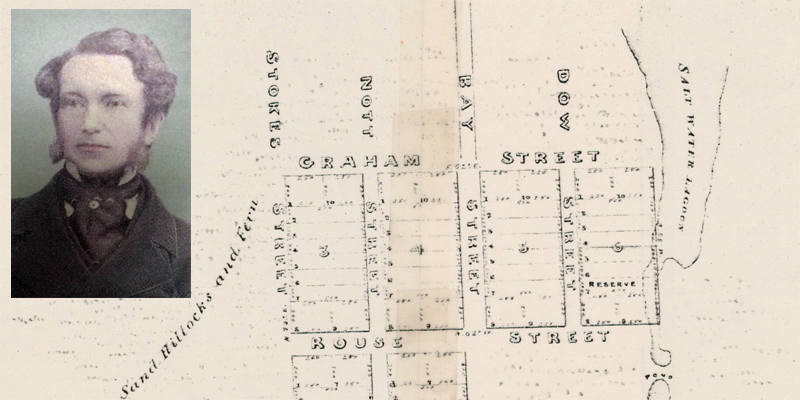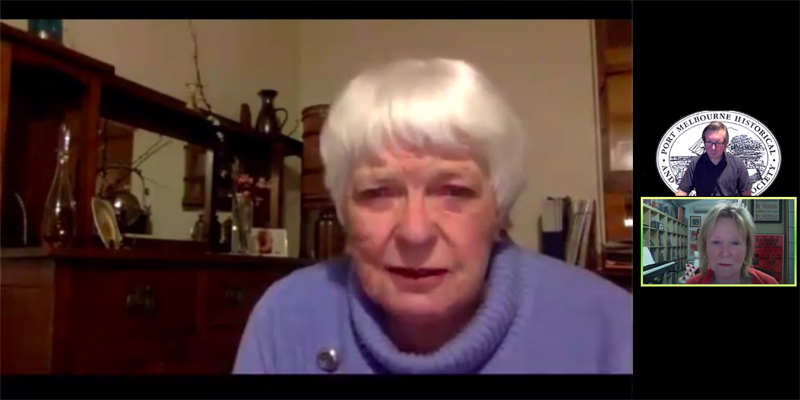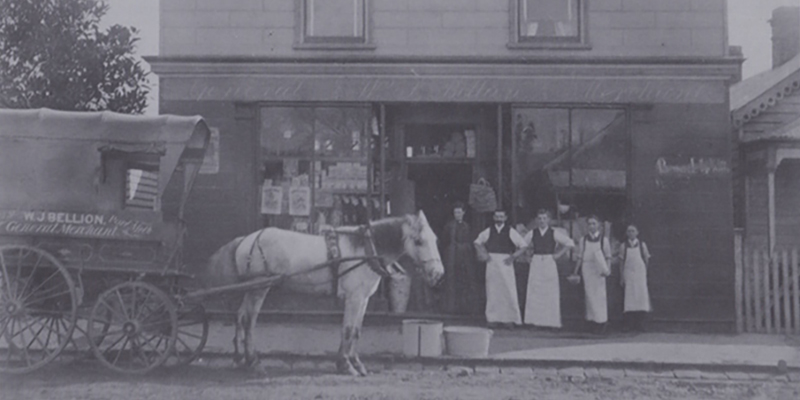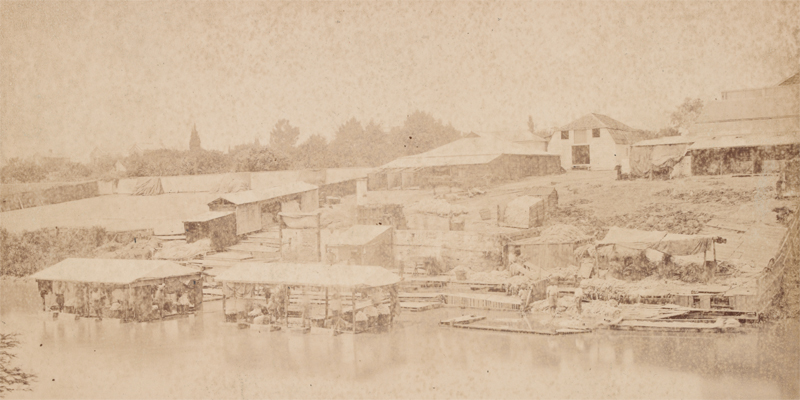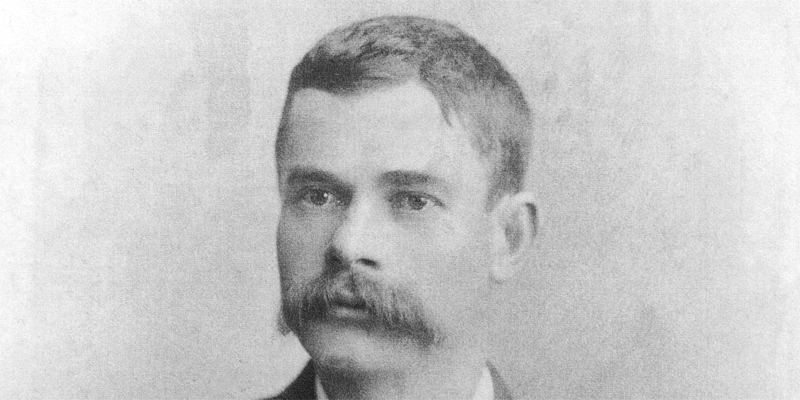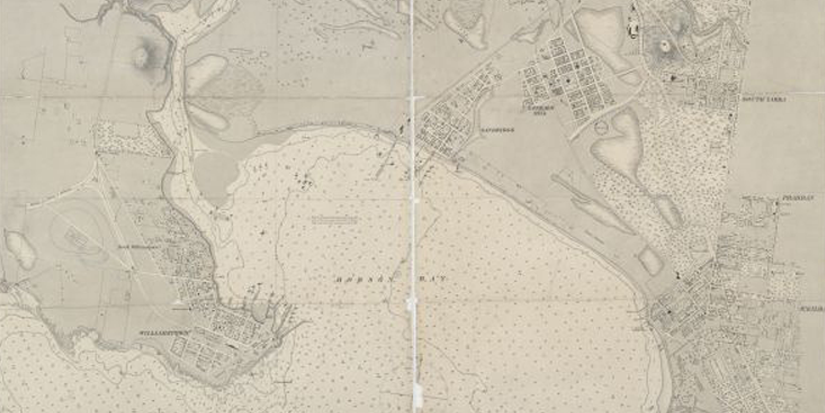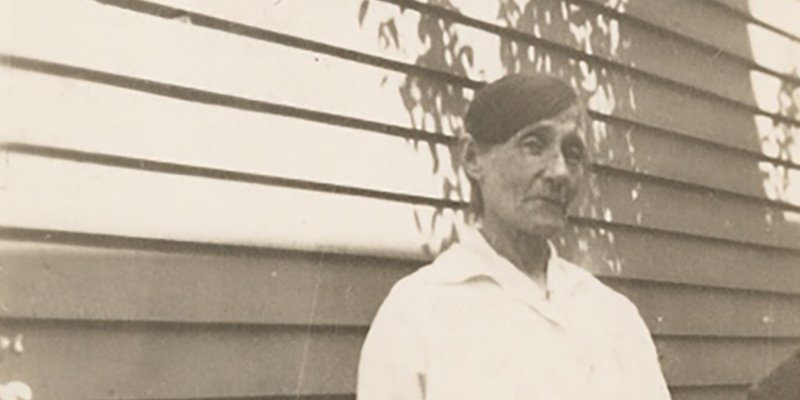by Margaret Bride
Detail, Plan of allotments marked at Sandridge in the parish of South Melbourne / surveyed by Lindsay Clarke Assit. Surr., 1849. State Library of Victoria.
In 1849 the government surveyor published a Street Plan of Sandridge showing a simple grid of streets with six blocks bounded by the newly named streets of Rouse, Graham, Stokes, Nott and Dow, names that have remained…
